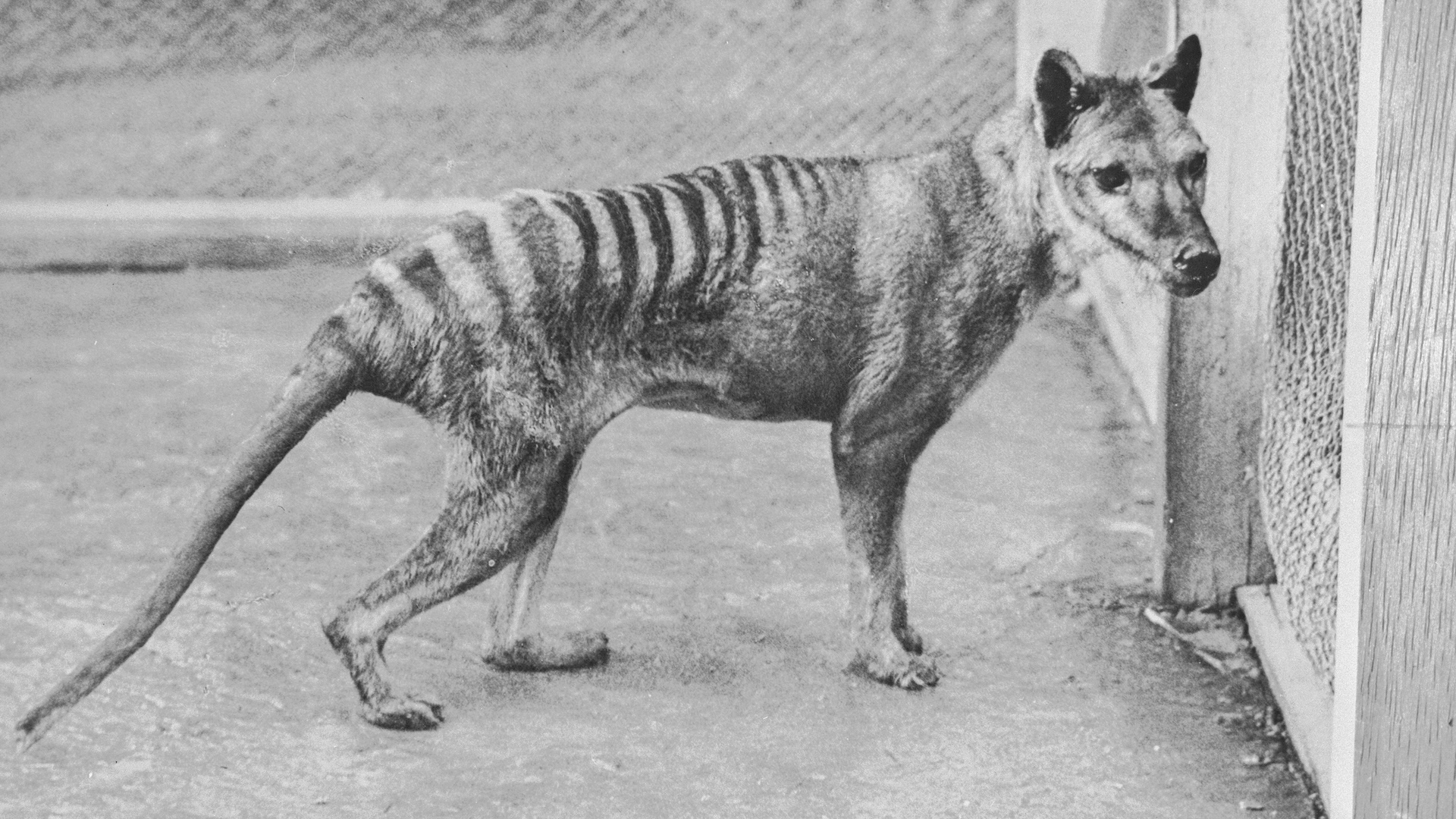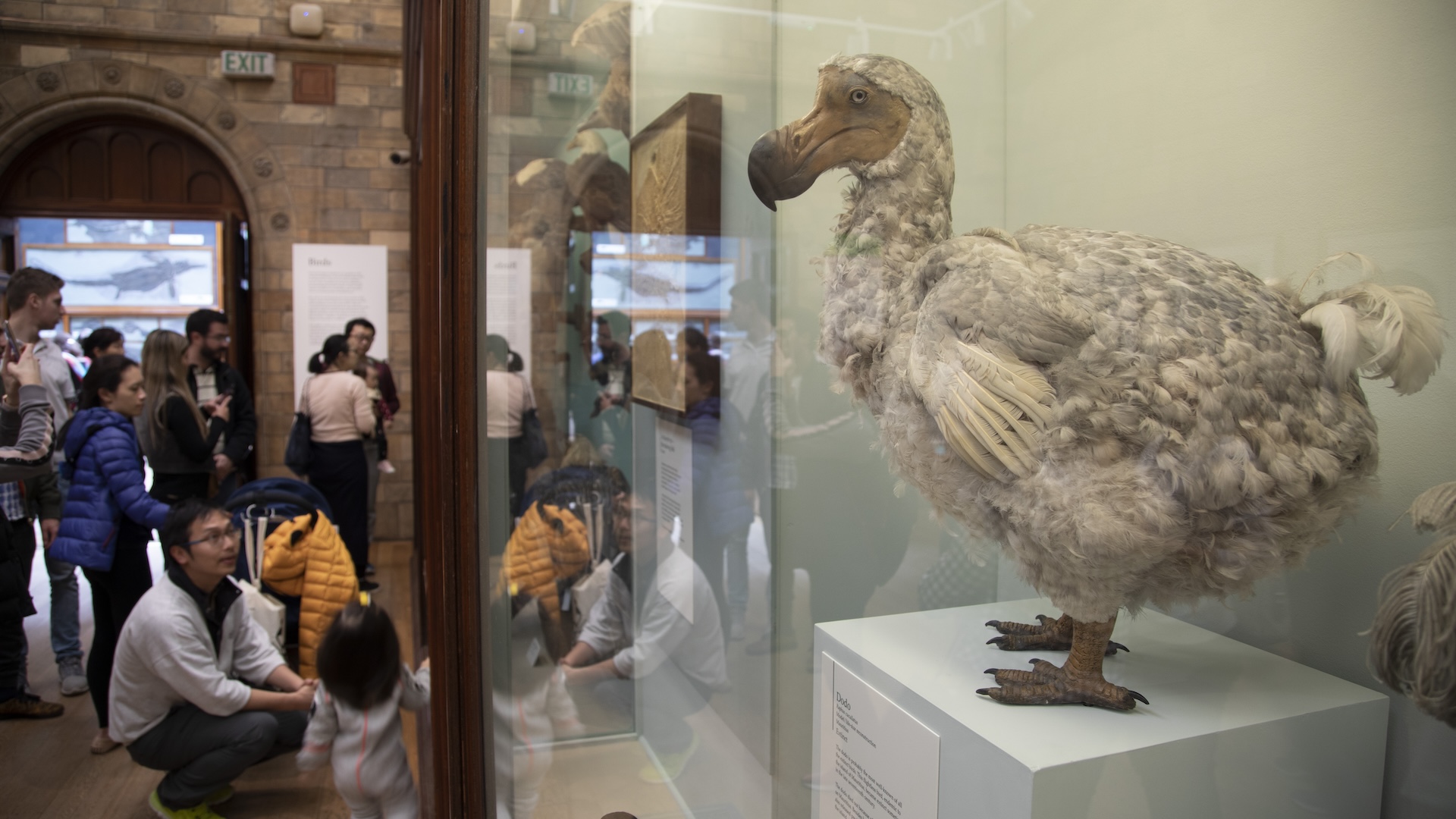
Humans are very good at wiping out wildlife. From dodos, to golden toads, to Tasmanian tigers, many species have succumbed to our unique blend of destruction. But just how many animal species have humans driven to extinction?
Scientists don't have an exact answer to this question, and it's a tricky number to estimate. However, it could be hundreds of thousands.
Let's start with the confirmed extinctions. A total of 777 animals have gone extinct since the beginning of the modern era in 1500, according to the International Union for Conservation of Nature (IUCN) Red List. Some of those extinctions could have been natural, but humans will have had a hand in almost — if not all — of them given how much we've impacted nature, particularly over the last 500 years. Humans began contributing to extinctions thousands of years ago, long before 1500, but scientists weren't around to study those extinctions and there's enough uncertainty surrounding today's extinction rate, so we'll focus on roughly the past 500 years.
The IUCN has assessed the extinction risk of only about 5% of the world's known species, so there must be many more extinctions that have not been recorded. A 2022 study published in the journal Biological Reviews suggested that as many as 150,000 to 260,000 of all known species could have perished since roughly 1500.
The numbers were so large, they surprised the study's lead author, Robert Cowie, a research professor at the University of Hawaii. "I thought, jeez, have I made some mistakes in the calculations?" Cowie told Live Science.
Related: What's the first species humans drove to extinction?
Cowie hadn't made a mistake, but his estimates came with significant caveats. To calculate the figure, his team took a random sample of 200 land snails and, using previous scientific studies and expert consultation, determined how many of the snails had gone extinct. Then, they calculated how many species would have gone extinct if all known species had suffered a similar extinction rate consistently over 500 years.
The extinction rate they calculated was 150 to 260 extinctions per million species-years (E/MSY) — in other words, 150 to 260 extinctions a year for every million species on Earth. Cowie also looked at extinction estimates for other wildlife groups, including amphibians and birds. The estimates ranged between 10 and 243 E/MSY, but there was a sweet spot.
"They tend to cluster around about 100 [E/MSY]," Cowie said. "I think that's a more reasonable, not overly conservative, but not overly exaggerated value."

Mystery math
Applying 100 E/MSY to Cowie's 2022 method suggests 100,000 of the roughly 2 million known species have gone extinct over the past 500 years. However, that doesn't account for unknown animal species.
A 2011 study published in the journal PLOS Biology estimated that there are around 7.7 million animal species. If we take that figure and assume 100 E/MSY over 500 years — subtracting the 3,850 animals that would be expected to naturally go extinct over 500 years with a 1 E/MSY background extinction rate — Live Science's final estimate for the number of animal extinctions caused by humans is 381,150. That's a rough estimate and should be taken with a grain of salt.
Grain of salt
John Alroy, an associate professor in the Department of Biological Sciences at Macquarie University in Australia, is working to quantify diversity and extinction. He told Live Science he believes it's virtually impossible to calculate modern extinction rates.
"We should be supercautious about trying to nail a number down based on the existing literature," Alroy said. "My feeling is that we don't have a very good fix on the current extinction rate whatsoever."
To understand the overall extinction rate, researchers need to know how many species there are in the first place, Alroy said. Not only is much of the world's wildlife unknown to science, regardless of estimates, but it's also often concentrated in understudied regions, such as the tropics. To make matters worse, insects have more species than any other animal group, yet we know little about them compared with larger-animal groups such as mammals and birds.
Although it will be difficult, Alroy proposed estimating the extinction rate using museum data for certain animal groups representative of larger groups and studying how many species they lose over time. "You'd want to know how many species did you have before, [and] how many species did you have after," Alroy said.
Regardless of the exact rate, Alroy is clear that humans are worsening the extinction rate and that the number of extinctions is much higher than the 777 recorded on the IUCN Red List.
The broad range of E/MSY estimates put forward in studies so far also have one thing in common: They're all much greater than the natural background rate. That's enough to say humans are harming Earth's biodiversity, according to Cowie.
"Whether the extinction rate is 100 E/MSY or 20 E/MSY or 200 E/MSY, it's still a lot, and it's still really bad," he said.







